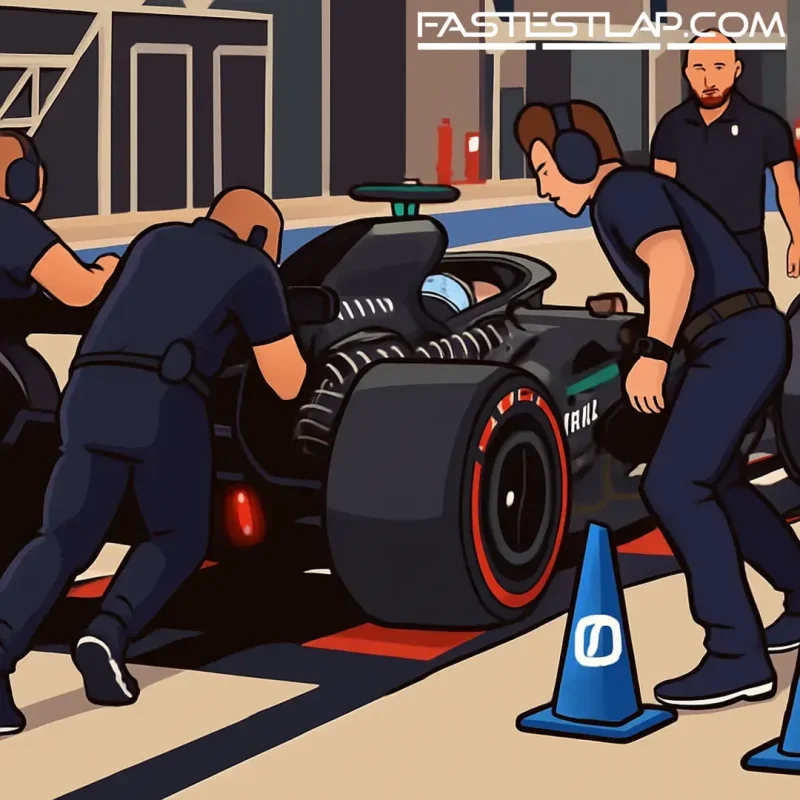FIA shuts pitlane scales to teams from Singapore, shifting weight game back to the garages
The pitlane is about to get a little quieter — and a little less convenient. Starting from the Singapore Grand Prix, the FIA has closed off its calibrated pitlane scales to team use, a small procedural tweak that could carry real knock-on effects for how operations are run across a race weekend.
Race Director Rui Marques signalled the change in his event notes for Singapore, confirming that the governing body’s scales — the very ones used for spot checks and scrutineering — are no longer available to teams at any time. Previously, squads could wheel their cars onto these official pads outside of curfew and parc fermé cover-up times, except for the half-hour before qualifying or when support series were using the pitlane. That window is now shut.
“The FIA scales will not be made available for teams to use from this event onwards,” the updated notes state.
No grand political backstory has been offered, and the rationale isn’t dressed up. The move is understood to be about practicality: cutting the sight of cars being pushed up and down the pitlane at odd hours just to grab a reference weight. In a championship obsessed with decimals and tolerances, the pitlane ballet around the scales had become part of the rhythm. Now, the beat changes.
The core issue is trust — not in the FIA, but in the numbers. Without access to the governing body’s scales, teams lose the ability to double-check their weight against the exact kit used in scrutineering. From here on, each of the 10 teams must rely entirely on their own pads and platforms being perfectly aligned with the FIA’s readings.
To help, the FIA has issued calibration weights to the teams so they can tune their equipment. Even so, there’s room for minor mismatches. Different manufacturers can throw up tiny offsets, and in a sport where grams can decide legality, “tiny” matters. Engineers will be busy characterising any offsets between their supplier’s hardware and the FIA’s, then baking that into their setup margins.
And yes, gravity comes into it too. The boffins in the garages will account for location-based variance — cars weigh fractionally less closer to the equator thanks to a slightly higher centrifugal force, and fractionally more near the poles. Singapore isn’t Monaco, and it certainly isn’t Montreal, which means the numbers need a nudge each time the paddock decamps to a new venue. None of this is dramatic; all of it is the sort of quiet, relentless housekeeping that keeps a car on the right side of the minimum weight at all times.
What might change in the short term is how tight teams run that margin. When you could sneak a check on the FIA pads mid-weekend, you could afford to be bolder. Now, expect a little more caution — an extra handful of grams left on the table to avoid post-session headaches. For the front-runners obsessed with trimming every last sliver of ballast, that’s an irritation. For the midfield, it’s one more spreadsheet column to manage.
Will it decide a title? No. Will it trip someone up? Almost certainly. The first time a car is called to the FIA scales after a session with something marginal in the setup — low fuel, worn tyres, odd track temps — a tiny calibration gap could turn into a very large problem. That’s why the best-run teams won’t treat this as a footnote; they’ll treat it as a process change.
Viewed generously, this is housekeeping from race control that restores some order to an increasingly busy pitlane and puts responsibility squarely back with the competitors. The FIA will keep doing the checking; the teams will do the guessing — educated guessing, with calibration weights and careful math — behind closed garage doors.
It’s a small story about scales and socks-and-sandals engineering detail, sure. But it’s also a reminder of what modern F1 has become: a championship where the difference between green and red in scrutineering can be a rounding error, and where something as mundane as access to a set of scales can subtly reshape the paddock’s weekend choreography. From Singapore onwards, the numbers are the same — just a little harder to reach.




